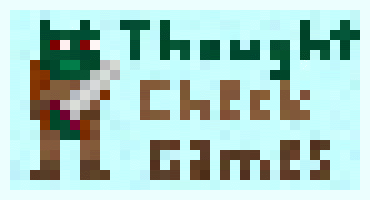 I’ve been playing a lot of Dishonored lately. It’s a pretty boss game, if you don’t mind incredibly outdated slang terms, but it has got me thinking, perhaps unsurprisingly, of game mechanics. Perhaps even a mechanic… OF THE WEEK?
I’ve been playing a lot of Dishonored lately. It’s a pretty boss game, if you don’t mind incredibly outdated slang terms, but it has got me thinking, perhaps unsurprisingly, of game mechanics. Perhaps even a mechanic… OF THE WEEK?
Yes. Yes perhaps. On page 8 of the manual:
“Your sword is always held in your right hand… In your left hand, you can equip any of your available gadgets or powers…”
On the PC, my console of choice, that binds stabbing to the left mouse button, and the use of gadgets and powers to the right. That’s important. That’s interesting. Let’s take a moment to talk about interaction with video games, shall we?
Games require a medium of information exchange with the “real world” and that means controllers. Ignore, for a moment, the Kinect (it’s not hard to do) and focus on chunks of plastic, whether they be paddles for the consoles or the mouse-and-keyboard I prefer. These tools are constructed to fit the human hand, and put the important buttons within easy reach. The more important a button is, the easier it is to press, whether that be because of its convenient location, it’s sheer size, or–most interestingly–its cultural status as “important.” What do I mean by that?
I mean, basically, that it was Playstation convention that the X button be linked to the most-used skill in the game. I mean that there’s no essential benefit to “WASD” as the keys bound to movement, over, say, “ESDF,” except inasmuch as it has become standard. And I mean that when using a mouse, you left click to activate a function, and right click to create a contextual menu. Clicking the left button means “Perform your primary objective” and clicking the right means “Let us consider some alternatives.”
And THAT brings me back to Dishonored. Your sword is bound to the left mouse button, the “Intended action” button. Yes, it can be re-mapped, but that’s beside the point: the creators of the game have privileged the use of the sword (and even if you do re-map the button, fact is the thing will always be drawn). If there is a person in front of you, the default action is to stab them, doing anything else is, by the nature of interaction, an alternative, a non-traditional option which is only ever contectually appropriate.
This exists in many, many games, and is somewhat endemic in first-person shooters, where the left click is generally tied to “shoot”. Of course, that’s the way one interacts with the world. What makes Dishonored an interesting case, to me at least, is the fact that it’s not a game with only one meaningful standard of interaction; it is perfectly feasible to not be murderous. There are other methods of dealing with dudes in front of you, even those who you wish to have a nice lie-down until you’re well and truly done with the level. And yet… that’s not what’s being privileged.
Which struck me at first as a flaw in an otherwise excellent game, until I took some time to really think about what that did on a narrative level. Corvo, the protagonist is, minimal spoilers here, not a straight up assassin, but a fellow who has been pushed into assassination by necessity. He’s broken out of prison, gotten caught up in politics most foul, and visited by an ancient god who granted him magic, before being thrust into the world and told “Here’s a target, go get him, you’re on your own.”
He is understandably nervous, isn’t he?
Why is stabbing tied to the left mouse button? Because it’s easy. It’s not necessarily wise, it’s never necessary, and it invited trouble, but it is the easy way to deal with any problem which comes in front of you. Its placement on the controlling medium reflects not the necessity of the action, but the siren call of it: “Choking this guy is dangerous, blinking away is dangerous, grabbing sleep darts is dangerous, just kill this shmoe and move the frig on!”
That’s what’s going through Corvo’s mind, and that’s what’s going, if not through the player’s mind, through the muscle memory in his fingers. A guard appears and the gut says “LEFT CLICK!” because that is how you meaningfully interact with the world. Fighting that instinct (or giving into it entirely, if you prefer) is something Corvo and the player have to contend with together. And that’s not a flaw at all, that’s using mechanical limitations to powerful effect.



